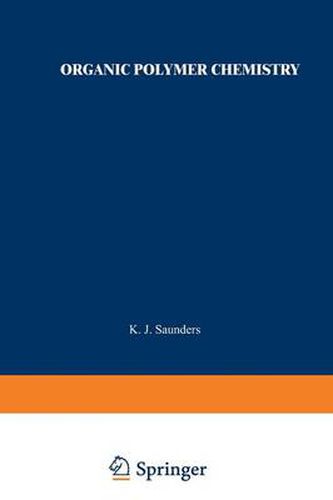Readings Newsletter
Become a Readings Member to make your shopping experience even easier.
Sign in or sign up for free!
You’re not far away from qualifying for FREE standard shipping within Australia
You’ve qualified for FREE standard shipping within Australia
The cart is loading…






This title is printed to order. This book may have been self-published. If so, we cannot guarantee the quality of the content. In the main most books will have gone through the editing process however some may not. We therefore suggest that you be aware of this before ordering this book. If in doubt check either the author or publisher’s details as we are unable to accept any returns unless they are faulty. Please contact us if you have any questions.
This book deals with the organic chemistry of polymers which find technological use as adhesives, fibres, paints, plastics and rubbers. For the most part, only polymers which are of commercial significance are considered and the primary aim of the book is to relate theoretical aspects to industrial practice. The book is mainly intended for use by students in technical institutions and universities who are specializing in polymer science and by graduates who require an introduction to this field. Several excellent books have recently appeared dealing with the physical chemistry of polymers but the organic chemistry of polymers has not received so much attention. In recognition of this situation and because the two aspects of polymer chemistry are often taught separately, this book deals specifically with organic chemistry and topics of physical chemistry have been omitted. Also, in this way the book has been kept to a reasonable size. This is not to say that integration of the two areas of polymer science is undesirable; on the contrary, it is of the utmost importance that the inter-relationship should b~ appreciated. I wish to record my thanks to my colleagues with whom I have had many helpful discussions, particularly Mrs S. L. Radchenko. I also thank Miss E. Friesen for obtaining many books and articles on my behalf and Mr H. Harms for encouragement and assistance. I am also grateful to Mrs M. Stevens who skilfully prepared the manuscript. Department of Chemical and Metallurgical Technology, Ryerson Polytechnical Institute, K. J. S.
$9.00 standard shipping within Australia
FREE standard shipping within Australia for orders over $100.00
Express & International shipping calculated at checkout
This title is printed to order. This book may have been self-published. If so, we cannot guarantee the quality of the content. In the main most books will have gone through the editing process however some may not. We therefore suggest that you be aware of this before ordering this book. If in doubt check either the author or publisher’s details as we are unable to accept any returns unless they are faulty. Please contact us if you have any questions.
This book deals with the organic chemistry of polymers which find technological use as adhesives, fibres, paints, plastics and rubbers. For the most part, only polymers which are of commercial significance are considered and the primary aim of the book is to relate theoretical aspects to industrial practice. The book is mainly intended for use by students in technical institutions and universities who are specializing in polymer science and by graduates who require an introduction to this field. Several excellent books have recently appeared dealing with the physical chemistry of polymers but the organic chemistry of polymers has not received so much attention. In recognition of this situation and because the two aspects of polymer chemistry are often taught separately, this book deals specifically with organic chemistry and topics of physical chemistry have been omitted. Also, in this way the book has been kept to a reasonable size. This is not to say that integration of the two areas of polymer science is undesirable; on the contrary, it is of the utmost importance that the inter-relationship should b~ appreciated. I wish to record my thanks to my colleagues with whom I have had many helpful discussions, particularly Mrs S. L. Radchenko. I also thank Miss E. Friesen for obtaining many books and articles on my behalf and Mr H. Harms for encouragement and assistance. I am also grateful to Mrs M. Stevens who skilfully prepared the manuscript. Department of Chemical and Metallurgical Technology, Ryerson Polytechnical Institute, K. J. S.